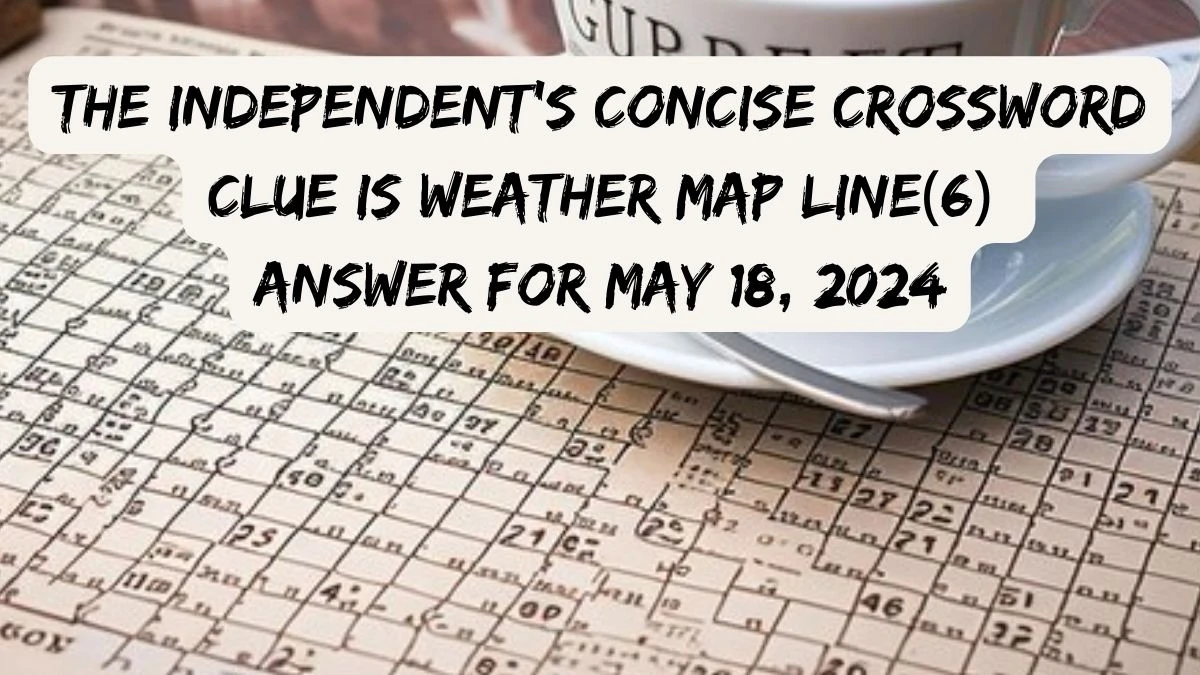The Independent's Concise Crossword Clue is Weather map line(6) Answer For May 18, 2024
by
Updated May 18, 2024

The Independent's Concise Crossword is a puzzle in The Independent, a British online newspaper. It's designed to be quick and easy, giving solvers a short but satisfying puzzle experience. Unlike tricky crosswords, which use wordplay and tricky clues, concise crosswords use simple definitions or similar words as clues, making them easier and quicker to solve.
These puzzles have a standard grid where answers go horizontally and vertically, making them great for a quick mental workout. They're published regularly in both the print and online versions of The Independent, to a wide range of solvers with their accessible and enjoyable challenges.
Clue
Today's The Independent's Concise Crossword clue is "Weather map line(6)''
Explanation
The clue "Weather map line (6)" refers to a specific feature commonly found on weather maps. It typically indicates a boundary or transition between different air masses or weather systems.
This also often represents changes in temperature, humidity, or air pressure, influencing weather patterns in the region. The clue prompts you to think of a term related to meteorology that describes such a line on a weather map. And the answer consists of a six-letter word.
Hints
- Six-letter words.
- Refers to a line on a weather map.
- Starts with the letter 'I'.
Answer
The answer is "ISOBAR".
Explanation
The answer for the clue, "Weather map line(6)'' is "ISOBAR".
The answer "ISOBAR" fits the clue "Weather map line (6)" because an isobar is indeed a line on a weather map that connects points of equal pressure.
The term "isobar" is derived from "iso," meaning equal, and "bar," referring to pressure. Isobars are essential in meteorology for visualizing areas of high and low pressure, which influence weather patterns.
They help meteorologists analyze and forecast weather conditions by identifying pressure gradients and areas of atmospheric instability. Therefore, "ISOBAR" is the right answer because it directly corresponds to the description of a line representing pressure on a weather map.